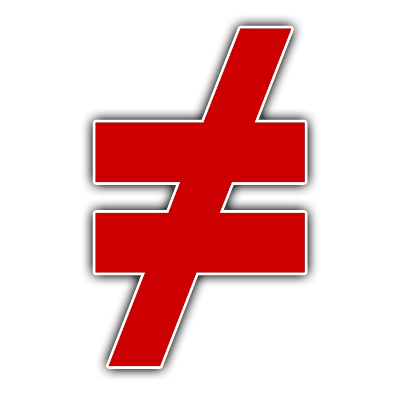
Unlike the less than sign, ≤ does not denote a strict inequality. This can also be read as meaning that the value or expression on the left hand side of the symbol can at most be equal to the value on the right, never greater. The less than or equal to sign is a symbol that indicates that the value on the left hand side of the symbol is either less than, or equal to the value on the right. If we want to denote that a can be less than or equal to b, we would use the less than or equal to sign (≤) instead. The value of a must be less than that of b. The following are valid uses of the less than sign: It indicates a strict inequality between two values specifically, the value on the left of the less than sign is smaller than the value on the right. The less than sign is the counterpart to the greater than sign. This is the only difference between ">" and "≥". This is because ≥ does not denote a strict inequality. GivenĪ can equal b, unlike the greater than sign. This can also be read as the value on the left hand side is at least equal to the value on the right. The greater than or equal to sign is a symbol that indicates that the value on the left hand side of the symbol is either greater than, or equal to the value on the right. In cases where a can also equal 4, we would use the greater than or equal to sign instead. Thus, if b were 4, a could be any value above 4, but not 4. The following are valid uses of the greater than sign:Ī must be greater than b. Greater than is a strict inequality, meaning that the value on the left of the sign must be greater than the value on the right they cannot be equal. The greater than sign is a symbol that indicates a strict inequality between two values specifically, that the value to the left of the greater than sign is larger than the value on the right. There are other, more specific inequality relations, like those below. While the above use of ≠ is true for all the cases, it doesn't tell us much other than that the expressions on either side of the symbol are not equal. The not equal to sign, also referred to as the does not equal sign, is a symbol that indicates the inequality of the values or expressions on either side of the symbol. In cases where the values are not equal, we can use a number of different inequality symbols, such as the not equal to sign. Equality (as well as inequality) is a basis for solving algebraic equations and inequalities.Īll of the above equations are true. Expressions on either side of an equals sign either have the same value, or have the same value for certain values.

The equals sign, symbolized as "=" indicates equality.

Although an equals sign is not technically an inequality symbol, it is discussed together with inequality symbols since it is included as part of non-strict inequalities such as greater than or equal to (≥) and less than or equal to (≤). Strict inequalities include less than () symbols, described below. Together with other mathematical symbols such as the equals sign (=), which indicates an equality relation, they are sometimes referred to as relation symbols. Inequality symbols are symbols that are used to indicate inequality relations. An interesting thing to note here is that the >= & <= operators also check for Equality.Home / algebra / inequality / inequality symbols Inequality symbols Comparison Operators and DateĪs you can see, the comparison operators on date work correctly.

For a case insensitive comparison, you need to convert the string either to upper case or lower case. All capital letters are “less than” all lowercase letters. else the operand with longer length is considered greater. In the end, if both operands are finished, then the strings are Equal. And the process continues until it reaches the end. If the characters are equal, then the comparison moves to the next character. If these are greater or less, then the comparison ends and result is returned. In a character-by-character comparison starts with comparing the first character of both operands. And the comparison is done character-by-character basis, using the Unicode values of the characters. The strings comparison uses the dictionary or lexicographical order. Because date is object and to be considered equal, they must point to the same object.Ĭomparison involving any other types will always result in false. Note that using Equality Operators = & = does not work on dates.


 0 kommentar(er)
0 kommentar(er)
